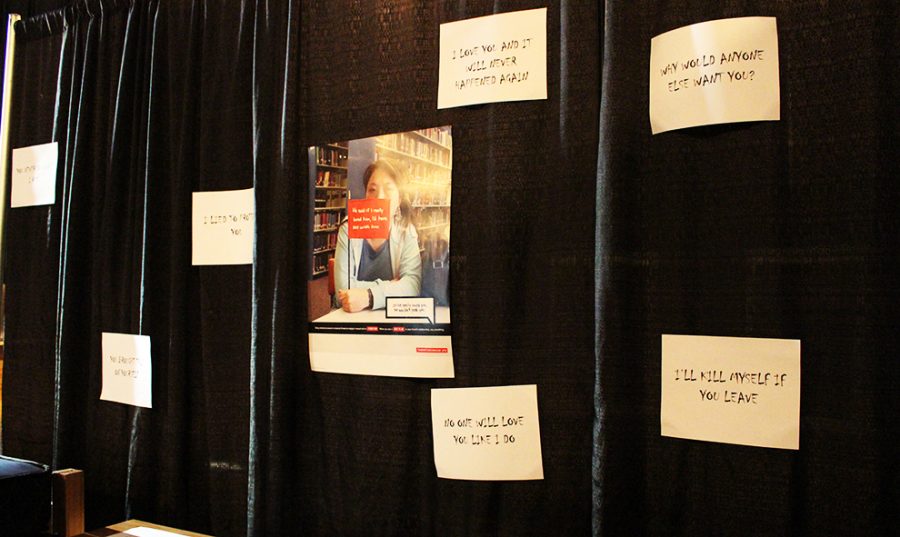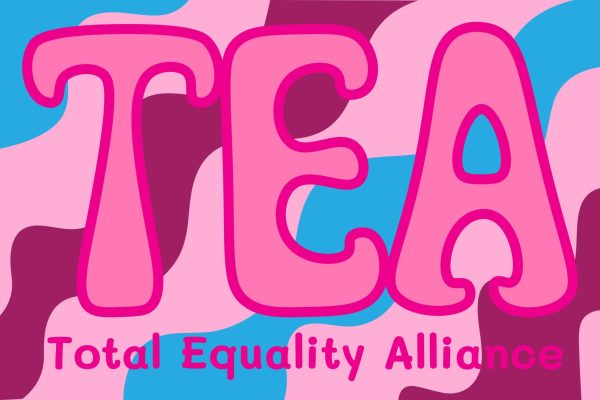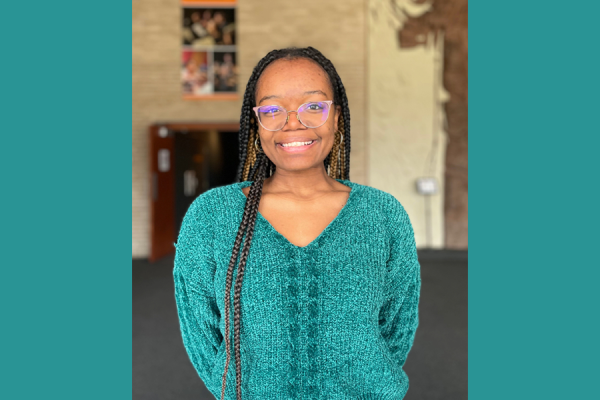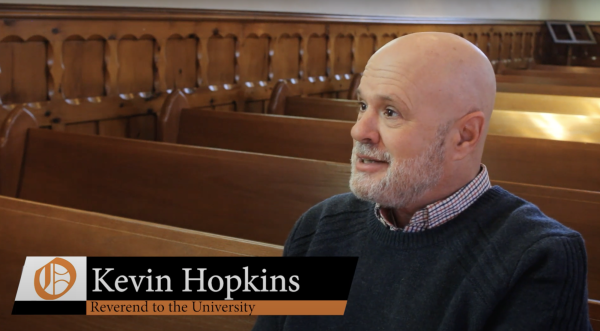Tunnel of Oppression highlights societal wrongs
The Student Activities Council held the Tunnel of Oppression in Parmenter on Feb. 27. Coordinator of Inclusion and Wellness Education Paul Ladipo guided students through the exhibit.
The Tunnel of Oppression is an interactive event hosted yearly for students. It included a walkthrough of several rooms depicting the most common forms of oppression present in society today. There was an area with informative posters presenting facts and definitions to the viewers and after walking through everything, there was a time for processing the information after the experience.
I began first by looking at the different posters. I was shocked at some of the information, particularly the facts regarding mental illness and hazing.
One-fourth of college students have a mental illness — this number was surprisingly high to me. It made me wonder how much of the stress of college and attempting to balance academics, athletics, clubs and a social life plays a factor in the development of the issue.
The stories about hazing that has taken place at other universities long ago and closer to present day concerned me. All of these activities are things that could greatly harm a person’s body or mind and are only completed by the victim in order to gain a certain social benefit or status, usually within a Greek organization.
This was upsetting to me because my experience with Greek life so far has been wonderful and what I feel is representative of what Greek life should be. It also saddened me that students felt such a need to fit in because of what society has taught them, that they would go along with whatever was asked of them, even though there was the potential for extreme consequences.
As I entered the Tunnel of Oppression, I grew increasingly uncomfortable knowing what lay behind the doors. This is because, while I know that oppression exists in our society and that changes need to be made, it is difficult to face and acknowledge sometimes.
The first room was a representation of racism, particularly in politics. Lately, President Donald Trump has been using negative language to describe people of other nationalities and races and is not receiving any real consequence for his actions. Furthermore, he has been using the same derogatory terms against American citizens of non-white races.
This is not a matter of conservative versus liberal or Republican versus Democrat; it is a matter of right versus wrong. People of other nationalities and races deserve the same amount of respect as all other people — we are all human at the end of the day. This situation is made even worse because Trump is suggesting that the same non-whites he has been speaking negatively about should also return to their country of origin, but their home country is the United States.
The second room explained the difficulties that people of the LGBTQ community face on a regular basis. The sentiment that stuck out the most to me was the fact that one of the LGBTQ females who was interviewed expressed that her biggest struggle was the fact that people assume she is a normal, cisgender woman. She would much rather be recognized for who she really is.
As I walked into the third room, I noticed a dresser and a bed. This room represented sexual assault and domestic violence, particularly on college campuses. There were statistics and commonly used phrases to coerce the victim, encourage the victim to keep what happened a secret and to convince the victim that what happened was their own fault. One-fifth of women will experience sexual assault during their lifetime. Women ages 18-24 are three times as likely to be sexually assaulted.
This room made me realize that several of the phrases were things that I have heard before and that I consider normal. Rape culture is perpetuated by media in television programs, movies and music. It leads to this type of oppression being normalized and no longer being taken as seriously as it should be.
The fourth room contained a variety of words that are used to describe certain body types. This segment pointed out the fact that we often oppress ourselves without realizing it, and that the comments of others in regards to our bodies fuel the self-oppression even more.
I learned that this type of oppression does not only affect people who have a certain type of body — a person can be judged no matter what body type they have. We are all beautiful and unique in our own way. Nobody has the right to take that away from us.
Perhaps the most important room was the final one I visited. This discussed the fact that many people are unaware of the types of oppression occurring in society and their own contributions to oppression. A large part of this stems from the privilege a person may have.
The Tunnel of Oppression allowed me to get out of my comfort zone and learn about flawed areas in our society. Growing up as an upper-middle-class white individual, I feel I was somewhat sheltered from many of these ideas.
This experience helped me to view oppression from the perspective of the victim and to have a greater sense of empathy for what others go through on a regular basis. It also encouraged me to be more aware of the current challenges faced by a variety of people.
The only way to combat ignorance is to continue the discussion through informing as many people as possible about the inequalities that are present in society so that a greater sense of mutual respect and understanding can form.







